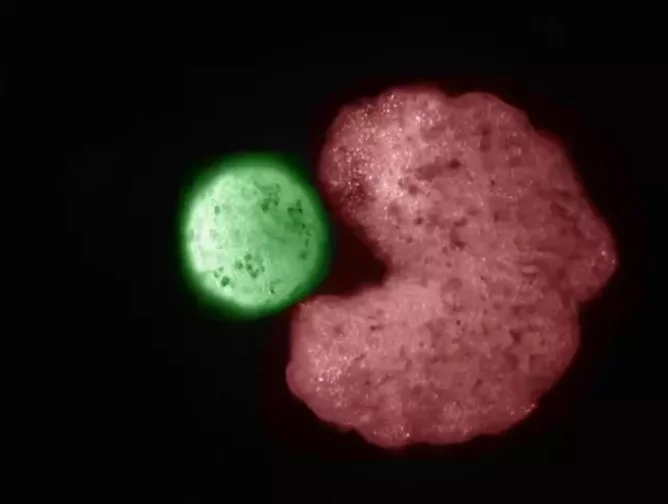Meet the Xenobots: living robots that reproduce

Pac-Man style living robots known as 'Xenobots 3.0' are considered to be the world's first ever self-replicating living robots, after new research from a number of leading bodies including the University of Vermont and Allen Discovery Center at Tufts University.
What is a Xenobot?
Developed from the cells of a frog, embryonic cells known as 'Xenopus laevis' would typically develop into skin. As Michael Levin, Professor of biology and director of the Allen Discovery Center at Tufts University and co-leader of the new research, explains: “They would be sitting on the outside of a tadpole, keeping out pathogens and redistributing mucus. But we’re putting them into a novel context. We’re giving them a chance to reimagine their multicellularity.”
The behaviour of these new cells was far different to any known living organism, including the unaltered frog genome that they were made from. And what they imagine is something far different than skin. Co-author Douglas Blackiston is a senior scientist at Tufts University who assembled the Xenobot “parents” and developed the biological portion of the new study.
He said: “People have thought for quite a long time that we’ve worked out all the ways that life can reproduce or replicate. But this is something that’s never been observed before.”
Why do they look like Pac-Man?
Using the Deep Green supercomputer cluster at UVM’s Vermont Advanced Computing Core, scientists were able to develop an evolutionary algorithm that tested billions of different shapes, such as triangles, squares and pyramids to see which one would perform the motion-based “kinematic” replication the best. Confounding the scientists, they saw that the 'Pac-Man' shape was providing most effective, gobbling up stem cells in its mouth before releasing the 'child' back out again.
Remarkably, the 'parent' forms by itself initially, before creating an identical replica.
“We asked the supercomputer at UVM to figure out how to adjust the shape of the initial parents, and the AI came up with some strange designs after months of chugging away, including one that resembled Pac-Man,” says Sam Kriegman, post-doctoral researcher at Tuft’s Allen Center and Harvard University’s Wyss Institute for Biologically Inspired Engineering, who was the lead author on the new study.

What does this all mean?
As with all AI-designed technologies, there is a tremendous amount of excitement balanced out with equal trepidation at the potential of this microcosmic world.
“We’ve discovered that there is this previously unknown space within organisms, or living systems, and it’s a vast space. How do we then go about exploring that space? We found Xenobots that walk. We found Xenobots that swim. And now, in this study, we’ve found Xenobots that kinematically replicate. What else is out there?” Professor Joshua Bongard, UVM College of Engineering and Mathematical Sciences.






